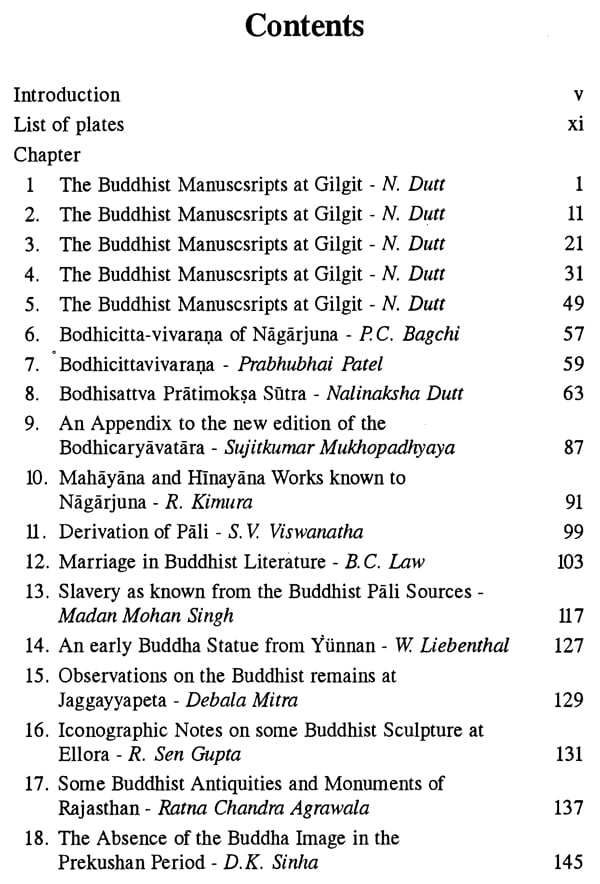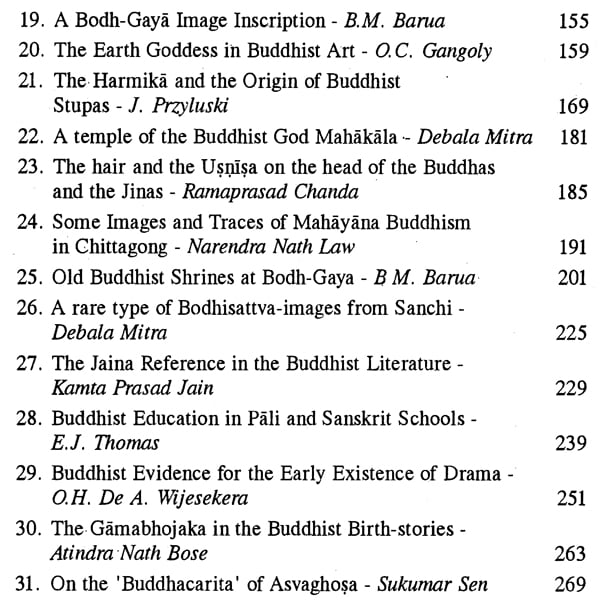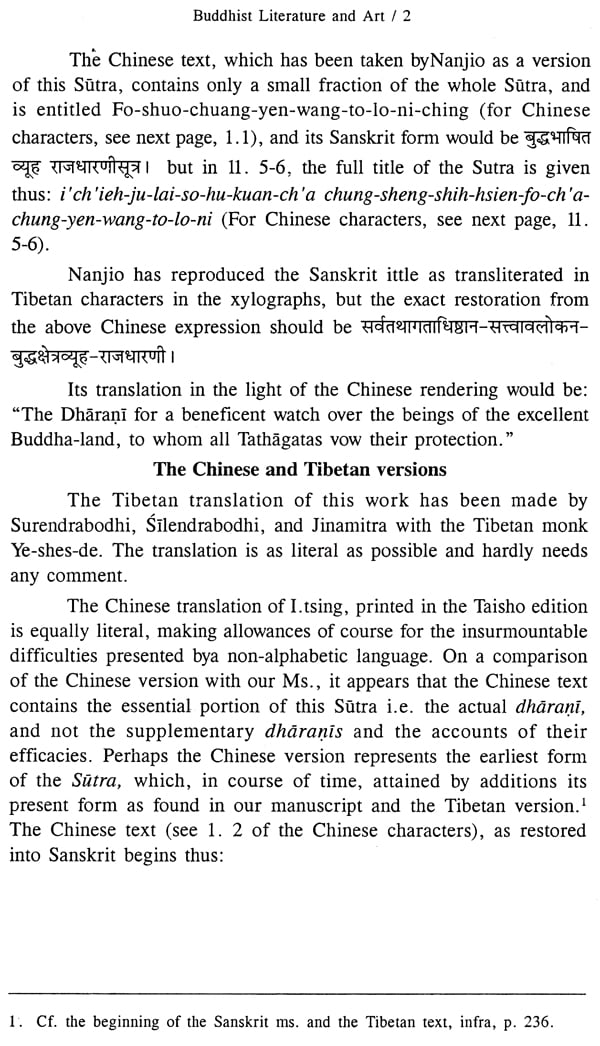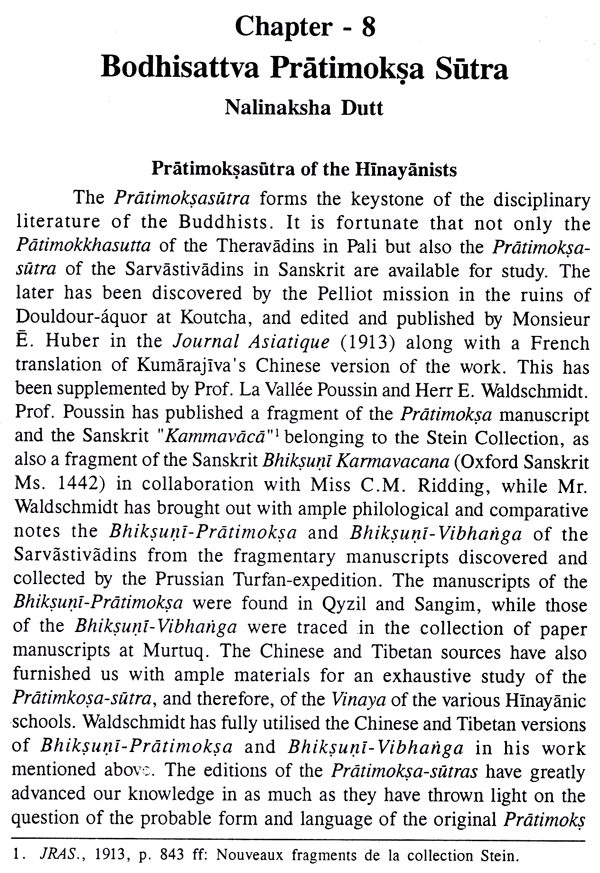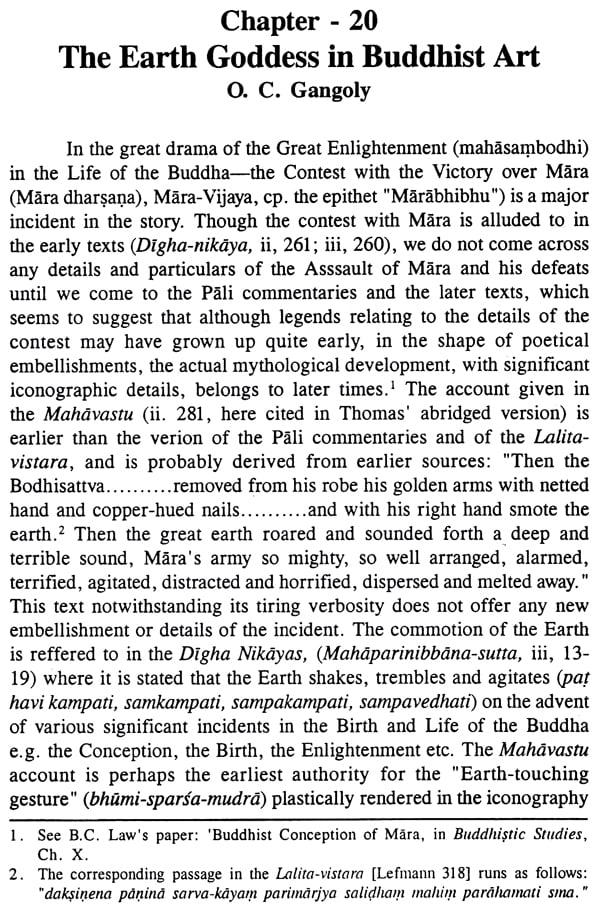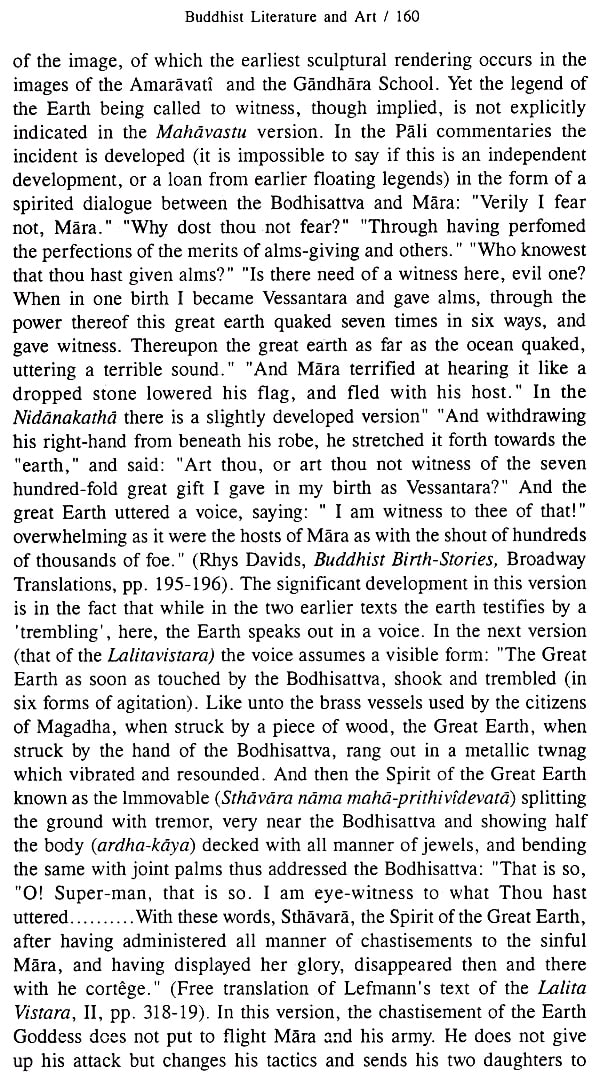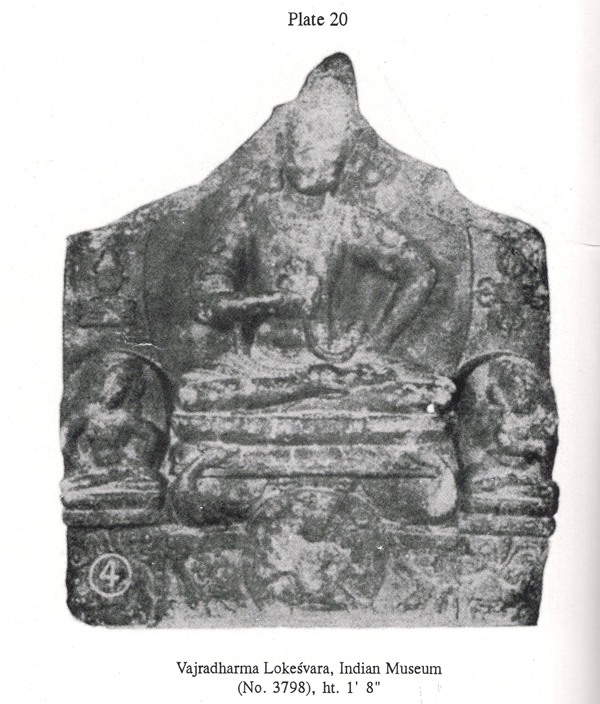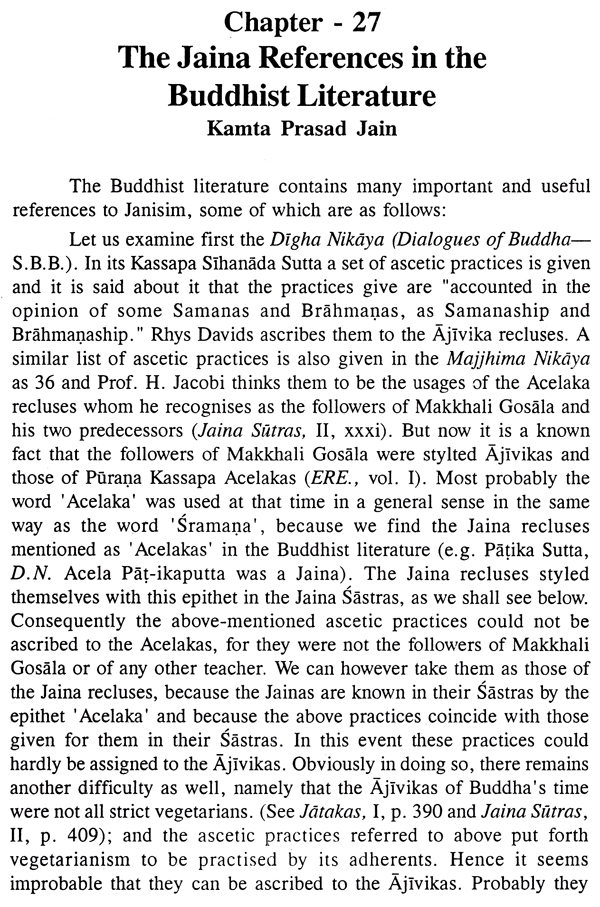
Buddhist Literature and Art
Book Specification
| Item Code: | NAS505 |
| Author: | Dr. Mahendra and P. Mittal |
| Publisher: | Originals, Delhi |
| Language: | English |
| Edition: | 2004 |
| ISBN: | 8188629286 |
| Pages: | 292 (Throughout B/W Illustrations) |
| Cover: | HARDCOVER |
| Other Details | 9.00 X 5.50 inch |
| Weight | 550 gm |
Book Description
Buddhist literature is amazingly vast. It has been produced at all points of time in ancient, medieval and modern times in India and outside all over the world Buddhist literature can be classified time-wise, language-wise and country-wise. Unfortunately a large amount of ancient literature could not be preserved and has been lost in oblivion. Some of it has been lost in original but some of it is available in translations and can be retrieved. It will be a huge but highly significant task to restore the lost literature, but it should be attempted by world scholarship as it would be valuable asset to human culture.
The basic Buddhist literature grew up on Indian soil in Pali and Sanskrit languages and has shaped the intellectual climate of India in ancient times. Soon it spread out to other Asian countries and reformed their psyche. In modern times Buddhist literature is being produced all over the world mostly in expository form. For the ancient literature there are several catalogues like that of Tanjore, Gilgit, Nanjio and some good bibliographic histories like that of Taranatha. A classified and comparative account of the entire Buddhist literature produced so far is a need of the times. It will be a gigantic work to be undertaken by a team of scholars.
The Buddhist literature, is mainly concerned with biographies of SAkya Muni, the Buddha, his previous births and future incarnations, the Bodhisattvas and their noble conduct, teachings of the Buddha, disciplinary codes for the Samgha, expositions of philosophical, epistemological, moral, religious and eschatological ideas, beliefs and practices.
The Buddhist art occupies a very significant position in the totality of Indian art traditions. Though distinctive in ideas and thematic descriptions, it is in line with the general Indian art traditions. The Buddhist art went outside India along with the spread of Buddhism and it assumed newer forms in the countries of its locale. It is a remarkable event in world history to witness Buddhist art in veriegated forms in the countries of Asia. For example, the Pagoda at Barabudur in Java, at Anuradhapuram in Ceylon and the Swayambhu Nath Temple in Nepal are artistic marvels which provide richness to world culture and civilisation.
Art and artistic pursuits constitute the very essence of a culture. A culture is known and evaluated in terms of its achievements in the fields of Arts apart from Science and Technology. Multiple arts and varied art-forms provide richness to a culture. It gets refinement and sophistication through development of Arts which cater to finer sensitivities of the human being.
Human mind has an innate necessity to express its thoughts, feelings and emotions through bodily gestures, languages and other symbolic modes of expression. When the highly subtle, complex and sublime thoughts, feelings and emotions cannot get exhibited through ordinary human language, human mind resorts to arts of different variety. Human mind cannot remain confined to itself. On the one hand it impels actions, and on the other it gets expressed in literature and arts.
Indian culture during its vast spatio-cultural canvas has evolved various types of arts and has achieved high degree of advancement. Indian art traditions have very ancient and long history and have been marvels in the world culture and civilization. Right from the Vedic times Indian mind has excelled in artistic creativity.
In the total stock and storehouse of art treasures the contribution of Buddhism has been immense and intense. Buddhist artists have expressed through various media all the noble ideas and ideals, beliefs and practices, mythologies and religiosity enunciated and inculcated in the Buddhist fold. The pursuit of arts in Buddhist circles had received great heights when Buddhism stepped outside the Indian territory. Buddhist arts acquired newer forms and newer dimensions in the countries it was spread over outside India. It got mingled with local morass and refined sensitivities of the people.
Buddhist literature is amazingly vast. It has been produced at all points of time in ancient, medieval and modern times in India and outside all over the world. Buddhist literature can be classified time-wise, language-wise and country-wise. Unfortunately a large amount of ancient literature could not be preserved and has been lost in ° oblivion. Some of it has been lost in original but some of it is available in translations and can be retrieved. It will be a huge but highly significant task to restore the lost literature, but it should be attempted by world scholarship as it would be valuable asset to human culture.
The basic Buddhist literature grew up on Indian soil in Pali and Sanskrit languages and has shaped the intellectual climate of India in ancient times. Soon it spread out to other Asian countries and reformed their psyche. In modern times Buddhist literature is being produced all over the world mostly in expository form. For the ancient literature there are several catalogues like that of Tanjore, Gilgit, Nanjio and some good bibliographic histories like that of Taranatha. A classified and comparative account of the entire Buddhist literature produced so far is a. need of the times. It will be a gigantic work to be undertaken by a team of scholars.
The Buddhist literature is mainly concerned with biographies of a.kya Muni, the Buddha, his previous births and future incarnations, the Bodhisattvas and their noble conduct, teachings of the Buddha, disciplinary codes for the Samgha, expositions of philosophical, epistemological, moral, religious and eschatological ideas, beliefs and practices.
From 3rd century B.C. to 3rd century A.D. there was a phenomenal growth of Buddhist art and literature in India. Since Buddhism emphasised corporate life, many caityas, viharas, stupas, temples etc. were built. Along with them the arts of architecture and painting were developed. A specific Buddhist art imagery came into existence which was known as Gandhara. Buddhist mode of tantra was also developed and Buddhist arts and tantra were brought closer to the arts and tantra practised in other religious sects of India of those times.
In the stupas the highest objects of adoration were the Buddha, the Dharma and the Samgha known as triratnas. The relics of the Buddha and other holy persons were preserved and worshipped. The relics were gdririka or corporeal, uddegikas or memorial and paribhogikas or articles used by Buddha and others. Hair relics, tooth relics, bone relics etc. are still preserved in some of these stupas. Some of the stupas also known as pagodas in Burma, Java, Ceylon and Nepal are majestic in size and shape and are masterpieces in architecture.
Along with stupas there are sculptures and bronze which have great aesthetic merit and iconographic value. The images of Buddha in elegant form and with radiant spiritual ecstasy, expressing wisdom and compassion are noteworthy. There are stone and metal images which are of great artistic and spiritual worth.
There are quite a good number of paintings in caitya halls and in caves which reveal the subtlity of ideas and depth of feelings. Solemn dignity, poise and detachment, spiritual sublimity and religious piety are the hallmarks of classical Buddhist paintings in India. Thanka paintings of Ladakh are well-known for their display of vigour, grace and vitality. Likewise, Gandhara art tradition finds its expression on book covers of Gilgit manuscripts. These paintings depict stories from Jatakas and Avadanakalpalata. Paintings at Ajanta, Ellora, Bagh etc. are world famous and they attract both scholars and tourists from all over the world.
Apart from paintings there are terracotta figures, exquisite ivory carvings and sculptures which have fine display of artistic skills. Here we find finest figures of the Buddha and the Bodhisattvas in human form. Their appearance is not only soothing but also bliss-giving. The Buddhist mythologies get full representation in Buddhist art.
Tantric influence of the Vajrayana variety is quite prominent in Buddhist art. All the tantric deities which are common to Buddhism and Hinduism have received a place of prominence in the Buddhist paintings. These paintings reveal the four Noble Truths, concepts of Prajfia or gunyata and karund with super-human qualities, feats of adventure and miraculous performances of Buddha and Bodhisattvas. Some of the paintings also reveal awe and reverence for the Buddha and the Dharma. Buddha has been quite often represented as a Kalyana Mitra, a spiritual guide and liberator. He is also represented as Bhais ajya Guru who is always willing to help the suffering humanity.
Apart from sculpture and painting the Buddhist art is also expressed through music, dance and drama which are important components of the mode of expression of religiosity. Music and dance in particular have tantric influence, overtone and bearing. They help in heightening of religiosity and spiritual enlightenment. They are the outcome of intense forethought, contemplation and concentration. They elevate mind to a state of total freedom, calmness and tranquillity so as to receive the inflow of divine grace.
Another form of Buddhist art is the inscriptions of the Buddhist rulers who have depicted the rules for noble conduct and ideal behaviour. Some of these inscriptions are in Brahmi characters and some of them are in script which was evolved later. All inscriptions convey a message of peace, universal well-being and orderly behaviour. They begin with obeisance to Lord Buddha, invoke his grace and enjoin people to follow the path shown by the Buddha.
**Contents and Sample Pages**
